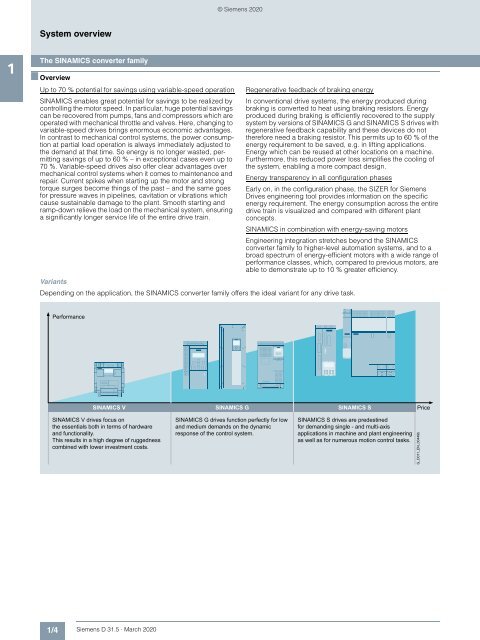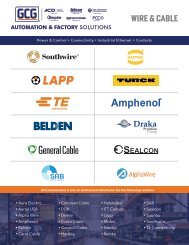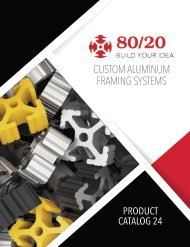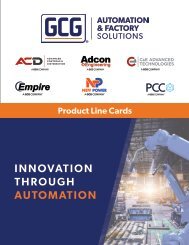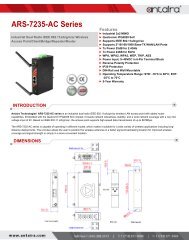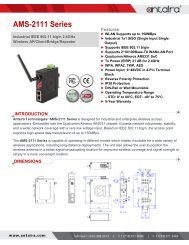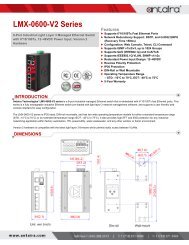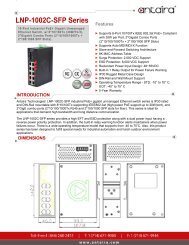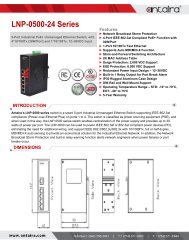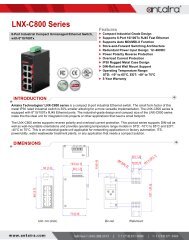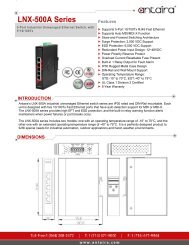motion-control-drives-D31-5-complete-English-2020-03-Update-2020-08
Create successful ePaper yourself
Turn your PDF publications into a flip-book with our unique Google optimized e-Paper software.
© Siemens <strong>2020</strong><br />
System overview<br />
1<br />
The SINAMICS converter family<br />
■ Overview<br />
Up to 70 % potential for savings using variable-speed operation<br />
SINAMICS enables great potential for savings to be realized by<br />
<strong>control</strong>ling the motor speed. In particular, huge potential savings<br />
can be recovered from pumps, fans and compressors which are<br />
operated with mechanical throttle and valves. Here, changing to<br />
variable-speed <strong>drives</strong> brings enormous economic advantages.<br />
In contrast to mechanical <strong>control</strong> systems, the power consumption<br />
at partial load operation is always immediately adjusted to<br />
the demand at that time. So energy is no longer wasted, permitting<br />
savings of up to 60 % – in exceptional cases even up to<br />
70 %. Variable-speed <strong>drives</strong> also offer clear advantages over<br />
mechanical <strong>control</strong> systems when it comes to maintenance and<br />
repair. Current spikes when starting up the motor and strong<br />
torque surges become things of the past – and the same goes<br />
for pressure waves in pipelines, cavitation or vibrations which<br />
cause sustainable damage to the plant. Smooth starting and<br />
ramp-down relieve the load on the mechanical system, ensuring<br />
a significantly longer service life of the entire drive train.<br />
Regenerative feedback of braking energy<br />
In conventional drive systems, the energy produced during<br />
braking is converted to heat using braking resistors. Energy<br />
produced during braking is efficiently recovered to the supply<br />
system by versions of SINAMICS G and SINAMICS S <strong>drives</strong> with<br />
regenerative feedback capability and these devices do not<br />
therefore need a braking resistor. This permits up to 60 % of the<br />
energy requirement to be saved, e.g. in lifting applications.<br />
Energy which can be reused at other locations on a machine.<br />
Furthermore, this reduced power loss simplifies the cooling of<br />
the system, enabling a more compact design.<br />
Energy transparency in all configuration phases<br />
Early on, in the configuration phase, the SIZER for Siemens<br />
Drives engineering tool provides information on the specific<br />
energy requirement. The energy consumption across the entire<br />
drive train is visualized and compared with different plant<br />
concepts.<br />
SINAMICS in combination with energy-saving motors<br />
Engineering integration stretches beyond the SINAMICS<br />
converter family to higher-level automation systems, and to a<br />
broad spectrum of energy-efficient motors with a wide range of<br />
performance classes, which, compared to previous motors, are<br />
able to demonstrate up to 10 % greater efficiency.<br />
Variants<br />
Depending on the application, the SINAMICS converter family offers the ideal variant for any drive task.<br />
Performance<br />
SINAMICS V<br />
SINAMICS G<br />
SINAMICS S<br />
Price<br />
SINAMICS V <strong>drives</strong> focus on<br />
the essentials both in terms of hardware<br />
and functionality.<br />
This results in a high degree of ruggedness<br />
combined with lower investment costs.<br />
SINAMICS G <strong>drives</strong> function perfectly for low<br />
and medium demands on the dynamic<br />
response of the <strong>control</strong> system.<br />
SINAMICS S <strong>drives</strong> are predestined<br />
for demanding single - and multi-axis<br />
applications in machine and plant engineering<br />
as well as for numerous <strong>motion</strong> <strong>control</strong> tasks.<br />
G_D011_EN_00449b<br />
1/4 Siemens D 31.5 · March <strong>2020</strong>


